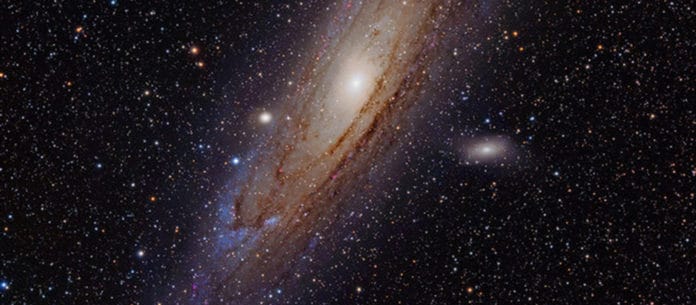There are several variabilities between cosmological theory and measurements made with various research instruments. Mainly, four values give astrophysicists a headache: the speed of the expansion of the Universe today, the magnitude of matter density variations within the Universe, and the temperature variations and trajectory of the primordial light of the Universe.
By not fixing the temperature of this light and the curvature of the Universe in their computations, scientists at the University of Geneva (UNIGE), Switzerland, have successfully reconciled theory with the data. This is an under-dense region in the Universe that slightly distorts the calculations and leads to these inconsistencies.
Benjamin Bose, a researcher in the Department of Theoretical Physics in the Faculty of Science at the UNIGE, said, “The first inconsistency concerns the speed of the expansion of the Universe. We can measure this speed either through supernovae – stars that implode at the end of their lives – or through the light of the cosmic microwave background (CMB) – the electromagnetic radiation that is observed throughout the Universe.”
“But these two measurements give a result that differs by more than 10%, which observational errors cannot explain. The second inconsistency concerns the magnitude of the variation in the density of the matter in the Universe, which again differs by around 8% if calculated from the CMB or the galaxies in the local Universe. Finally, the last two inconsistencies are statistical features of the CMB’s temperature variations and light path. In this case, the theory fails to match the observations.”
These inconsistencies are still being studied. In collaboration with Lucas Lombriser, a professor in the Department of Theoretical Physics at the UNIGE, Bose aimed to reconcile these four inconsistencies with a single theory. Their theory won’t itself introduce numerous other hypotheses to be tested.
Scientists did this by analyzing observational data that produces these inconsistencies by not assuming a particular temperature of the CMB and the curvature of the Universe.
Benjamin Bose enthuses, “By removing these two assumptions, not only do the inconsistencies in the temperature variations of the CMB and its trajectory decrease, but those linked to the speed of the expansion of the Universe today and the spatial differences in the density of matter disappear, with measurements that are in statistical agreement!”
But how can this be explained?
Lucas Lombriser hypothesized that the Earth is located in an under-dense region within the Universe when compared to the average.
“This is why the measurements we make are slightly off, with the temperature of the cosmic microwave background being somewhat higher than the temperature we observe locally. This hypothesis is corroborated in particular by measurements made of local galaxies, which would support the idea that the Earth is indeed in a less dense region of the Universe than the average.”
Benjamin Bose said, “We show here that we do not need new physics to solve the scientific problems we face. It may just be a matter of taking a new point of view.”
Journal Reference:
- Benjamin Bose et al. Easing cosmic tensions with an open and hotter universe. DOI: 10.1103/PhysRevD.103.L081304
